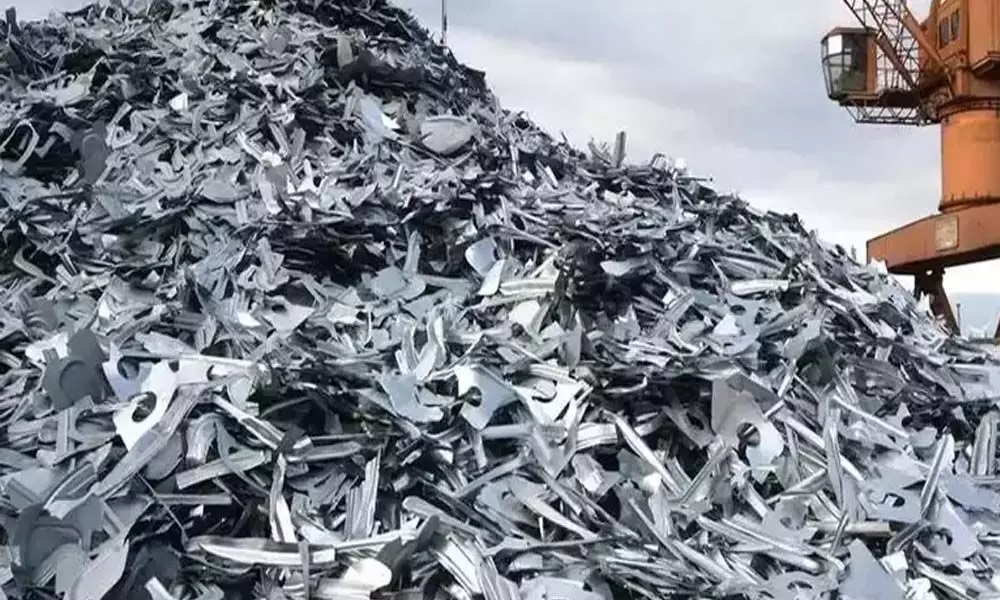India's non-.metal scrap recycling needs balanced solution
Given the pandemic situation, the entire non-ferrous metals complex has seen a persistent rally with gains to the tune of 30-80 per cent in the last 12 months.
image for illustrative purpose

Given the pandemic situation, the entire non-ferrous metals complex has seen a persistent rally with gains to the tune of 30-80 per cent in the last 12 months. The swiftest and consistent move has come in copper, backed well by a host of fundamental factors. Calendar 2021 may prove to be a transformative year for copper. Inflation expectations are rising and global economic activity recovering, with demand from China, in particular, returning at a rapid pace. Non-ferrous metals include aluminium, copper, zinc, lead, nickel and tin. Demand for non-ferrous metals comes from sectors such as agriculture, automobiles, railways, telecommunications, construction and chemicals. 'Metals' is a key sector as it meets the requirements of a wide range of important industries.
Now, as we all know that metals such as copper, aluminium, tin, zinc and nickel have all increased this year on the global economy recovering from the Covid pandemic between six per cent (nickel) and 53 per cent (tin). However, on Wednesday, prices of these metals dropped barely by one per cent.
Though China, world largest consumer of metals, did not specify the volume of the reserves it will offload, US multinational investment bank Citigroup Inc said Beijing could sell two per cent of its annual demand in aluminium and zinc. This could result in 770,000 tonnes of aluminium and 140,000 tonnes of zinc being auctioned to processors and manufacturers, while the release of copper could be a minimum volume. Dutch multinational investment bank ING said China could release 800,000-900,000 tonnes of aluminium. Meanwhile a recent move by China to release State-owned inventory of non-ferrous metals, mainly copper, aluminium and zinc, to bring down their prices in the global commodity markets seems to be having little effect.
Experts feel that this could even be a last-ditch move by China to rein in surging prices of non-ferrous metals, whose supplies are key to its development programmes and decarbonisation efforts. China has announced to release metals from its national reserves to nonferrous processing and manufacturing firms through a public auction weighed on Investor sentiments.
When it comes to India, the base metal has fallen over 15 per cent after hitting an all-time high of $10,746/tonne on May 10. According to metals analysts, in India base metals had been trading under pressure on a stronger dollar and China crackdown fears. China announced a plan to sell state reserves of copper, aluminium and zinc, in an effort to curb a strong price rally in commodities. Interestingly, the demand for aluminium in India has increased at a compound annual growth rate (CAGR) of 6.77 per cent. The production has also increased from 3.3 million tonnes (MT) in 2015 to approximately 5 MT in 2019 with a CAGR of 11.19 per cent.
Considering the growing demand for aluminium in future, there will be heavy dependence on domestic production and imports. Similarly, the Copper demand in India is expected to grow at 6-7 per cent due to increased thrust of Centre towards 'Make in India' and 'Smart City' programmes, development of industrial corridors, housing for all Indians by 2022, National Highway development project, rail project and defence production policy to encourage indigenous manufacture, according to the mining ministry. Quite significantly, the Centre has issued a framework for scrap recycling of non-ferrous metals, including aluminium and copper, in a bid to cut down the scrap imports. The mines ministry is also of the view that one of the key challenges faced by the non-ferrous metals industry is its heavy dependence on import of metal scrap and stressed that a major share of the demand is served by imports owing to the underdeveloped metal scrap collection, segregation and processing infrastructure in the domestic market. Any policy formulation in this regard will have to keep in mind that such heavy dependence on non-renewable resources is not in line with global sustainable development goals and will lead to high carbon footprints. India needs to trade off and needs to find out a balanced solution.

